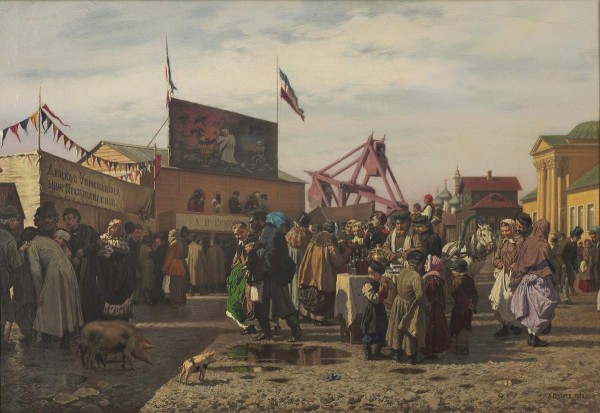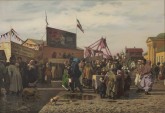Fair Booths in Tula during Holy Week
Version of the painting of the same name (1868, Tret. Gal.). 1873
- Period Late 19th century
- CategoryGenre Painting
- Share
The most important Orthodox holiday is Easter, which also signalled the opening of the season of spring and summer outdoor fêtes. The names of the fêtes reflected the times of the year in which they were helds. There were accompanied by simple and circular swings. Various entertainments were organized beneath the swings and these were a prominent feature in the life of the Russian urban population. Also popular from the end of the seventeenth century onwards were such forms of entertainment as fairgrounds, puppet shows, traditional Russian Punch-and-Judy shows (Petrushka), camera obscuras (raree shows or raiki), farces and carousels. A unique and original colouring was lent to the festivities by the various forms of advertisement - the pressing invitations of the traders, the raree showmen, the bright signboards and placards. The fête therefore represented a bright and colourful chaos. The writer Vsyevolod Ivanov affirmed that one felt "confused and delighted "every visited a fête at the height of the festivities and overcome by the sheer volume of noise. Play and Passion in Russian Fine Art. St-Petersburg. 1999. P. 96.
This picture was painted in the artist's home town. It conveys the uncomplicated enjoyment of provincial life. On a holiday the inhabitants, surrounded by crowds of children, would congregate on the square, eat, drink and enjoy themselves the fair. This was in stark contrast to their workaday lives. Play and Passion in Russian Fine Art. St-Petersburg. 1999. P. 96.

